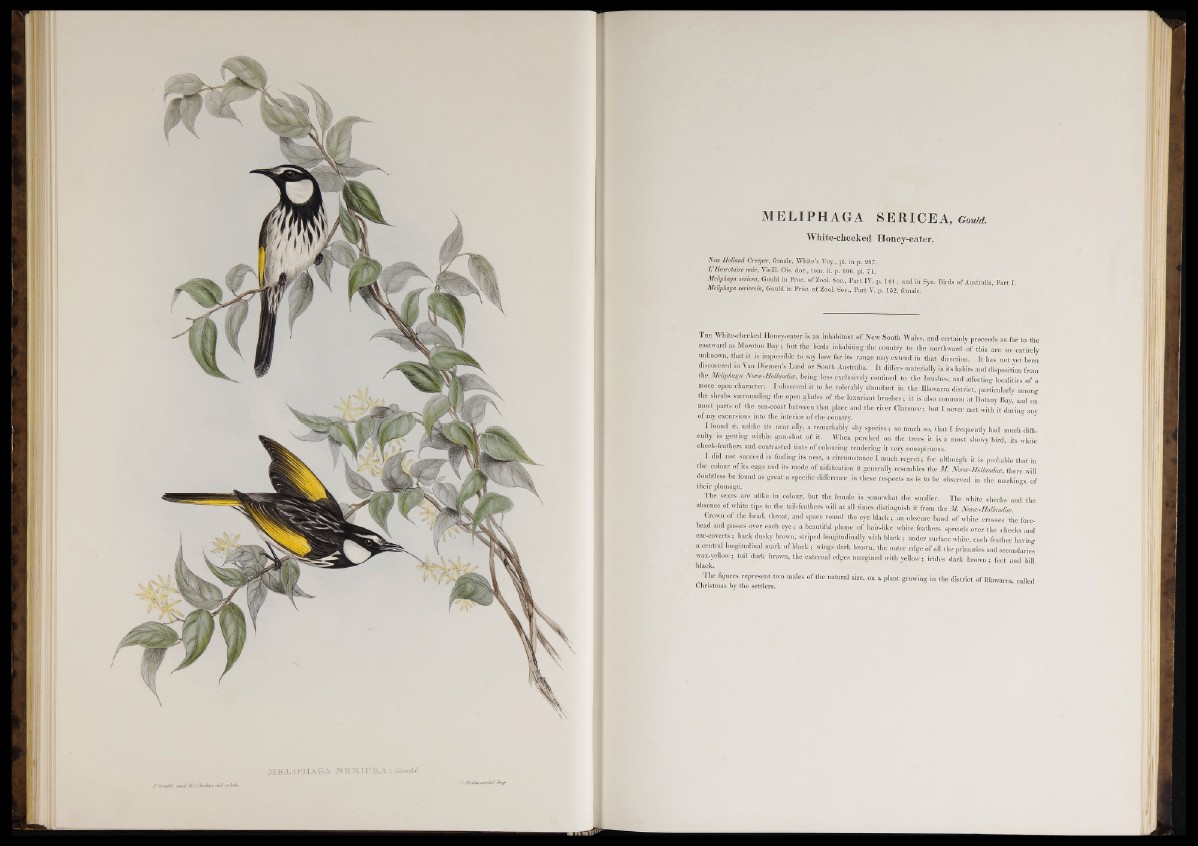
MELIPHAGA SERICEA, Gould.
White-cheeked Honey-eater.
New Holland Creeper, female, White’s Voy., pi. in p. 297.
L’Heorotaire noir, Yieill. Ois. dor., tom. ii. p. 106. pi. 71.
Meliphaga sericea, Gould in Proc. ofZooL Soc., Part IT. p. 141; and in Syn. Birds of Australia, Part I.
Meliphaga sericeola, Gould in Proc. of Zool. Soc., Part Y. p. 152, female. ‘
The White-cheeked Honey-eater-is an inhabitant of New South Wales, and. certainly proceeds as far to the
eastward as Moreton Bay; but the bij-ds inhabiting the country to the northward of this are so entirely
unknown, that it is impossible to say how far its range may extend in that direction. It has not yet been
discovered in Van Diemen’s Land or South Australia. It differs materially in its habits and disposition from
the Meliphaga Nmte-Hollanim, being less exclusively confined to the brushes, and affecting localities of a
more open .character. I observed it to be tolerably abundant in the Illawarra district, particularly among
the shrubs surrounding the open glades of the luxuriant brushes; it is also common at Botany Bay, and on
most parts o f the sea-coast between that place and the river Clarence; but I never met with it during any
of my excursions into the interior o f the country.
I found it, unlike its near ally, a remarkably shy species; so much so, that I frequently had much difficulty
in getting withm gun-shot of it. When perched on the trees it is a most showy bird, its white
cheek-feathers and contrasted tints of colouring rendering it very conspicuous.
I did not succeed iu finding its nest, a circumstance I much regret; for although it is probable that in
the colour of its eggs and its mode of nidification it generally resembles the M. Nova-Holhmiia;, there will
doubtless be'found as great a specific difference in these respects as is to'be observed in the markings of
their plumage.
The sexes are alike in colour, but the female is somewhat the smaller. The white cheeks and the
absence of white tips to the tail-feathers will at aU times distinguish it from, the M. Nmee-HollanduB.
Crown of the head, throat, and space round the eye black; an obscure band of white crosses the forehead
and passes over each eye; a beautiful plume of hair-like white feathers spreads over the cheeks and
ear-coverts; back dusky brown, striped longitudinally with black; under surface white, each feather having
a central longitudinal mark of black ; wings dark brown’, the outer edge of all the primaries and secondaries
wax-yellow; tail dark brown, the external edges margined with yellow; irides dark brown ; feet and bill
black.
The figures represent two males of the natural size, on a plant growing in the district o f Illawarra, called
Christmas by the settlers.